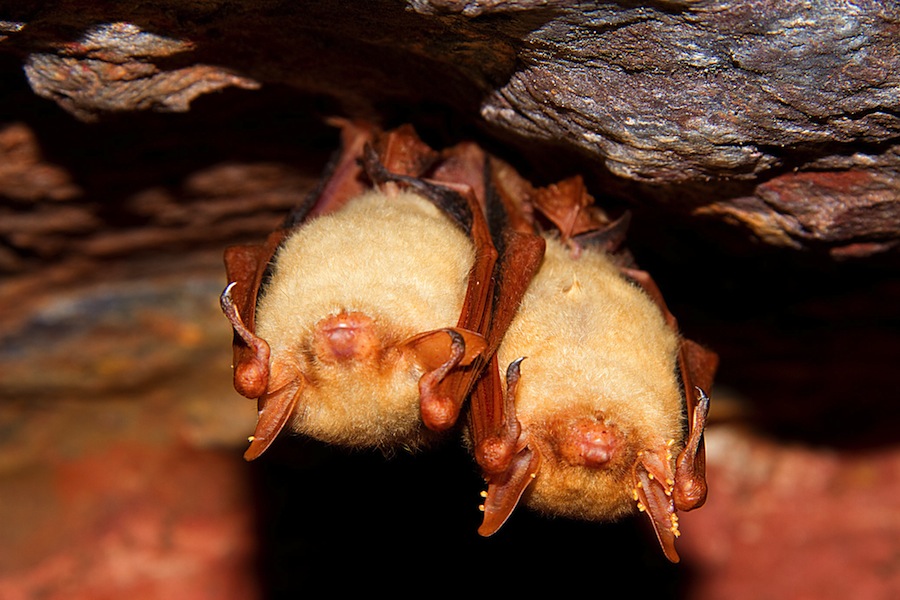
The Hodgson’s Bat (Myotis formosus) is a strikingly colored bat that roosts in foliage. It is a widespread species ranging from Central to South-east Asia. In India it is reported from 14 localities in North and East India and one locality in Central India. This species superficially resembles the more popular Painted Wolly Bat (Kerivoula picta).
On 12th January 2013 at 11:13 h, we (D.V. Girish, Shashank Dalvi, Vishnupriya Sankararaman and Rohit Chakravarty) visited Mullayangiri peak (elevation 1875m) in Chikamagalur district of Karnataka. Two bats were observed roosting in torpidity (brief hibernation) in a cave along the edge of the hill. Since they were torpid, a thorough visual examination was made and measurements were taken. The shape of the ears and the tragus (inner ear) coupled with our set of measurements helped us confirm our identification.
This observation is significant as 1) it is the first record of this species from Western Ghats (ca. 1178 km from its known southernmost locality in Central India) and 2) it is also the first sighting of this bat undergoing torpidity in tropical India. Being a foliage roosting bat, it is rarely encountered in India. We therefore suggest that the species may well be present in suitable regions of Western Ghats.
Inspite of being the most species-rich order of mammals in India (with about 120 species!), bats are an ignored group due to their nocturnal and elusive ways of life, difficult identification and the need for sophisticated and expensive equipment (like bat detectors) to study them. Hence little is known about their distribution in India, let alone have relevant ecological information.
Moreover, all Indian bats with the exception of Wroughton’s Free-tailed Bat and Salim Ali’s Fruit Bat are categorized as ‘vermin’ under the Wildlife (Protection) Act, 1972, which often reduces the motivation to engage in bat research. We therefore suggest that the ecological role of bats as pest controllers be recognized and their status be uplifted from Schedule V. More focus should be generated in bat research so that we match up to the standards of other tropical countries like those in South-east Asia and the Caribbean.

 CI is a non-profit, non-commercial portal that aims to facilitate wildlife and nature conservation by providing reliable information and the tools needed to campaign effectively.
CI is a non-profit, non-commercial portal that aims to facilitate wildlife and nature conservation by providing reliable information and the tools needed to campaign effectively.
Chosen as 'Picture of the Week'
It is unfortunate that almost all Indian bats are categorized as 'vermin' under the Wildlife (Protection) Act, 1972. Bats' significant ecological role as pest controllers should be recognized and their status uplifted.